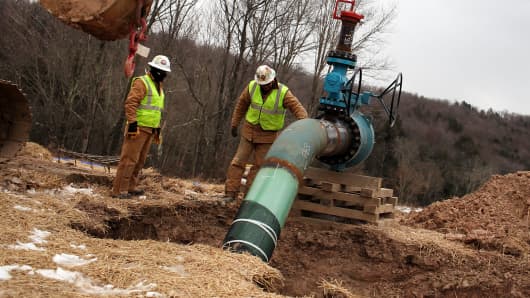For the first time in decades, pundits are talking seriously about U.S. energy independence. Yet the changes are anchored in precisely the opposite phenomenon. The United States is more entangled in the global energy system than it has ever been—and ever-rising world demand for energy will remain at the root of transformations in American energy for years to come.
It's richly ironic.
Take the emergence of shale gas as an economic engine and geopolitical disruptor. Entrepreneurs would never have figured out how to efficiently combine horizontal drilling and hydraulic fracturing—the masterstroke that has allowed companies to unlock natural gas trapped in shale—if rising natural gas prices in the 2000s had not created an economic incentive to experiment.
Those high natural gas prices, in turn, can be traced to ever-higher prices for oil, since the two fuels competed in U.S. industry until a few years ago, keeping their prices roughly in line. And those oil prices? We would never have experienced them if rapidly growing use in China and beyond hadn't strained available supplies.
One can tell an even more powerful story for the U.S. oil boom that in 2012 led to the largest ever one-year increase in American crude production. Tight oil, which is driving the gains, is benefiting not only from the technologies first developed to extract natural gas, but is being buoyed even today by continuing high oil prices. Shale gas has largely survived a collapse in U.S. natural gas prices, but most tight oil development would not survive an oil price crash. The growth we're seeing from Ohio to Texas thus continues to ultimately owe its continued strength in large part to ever-rising oil demand overseas.




